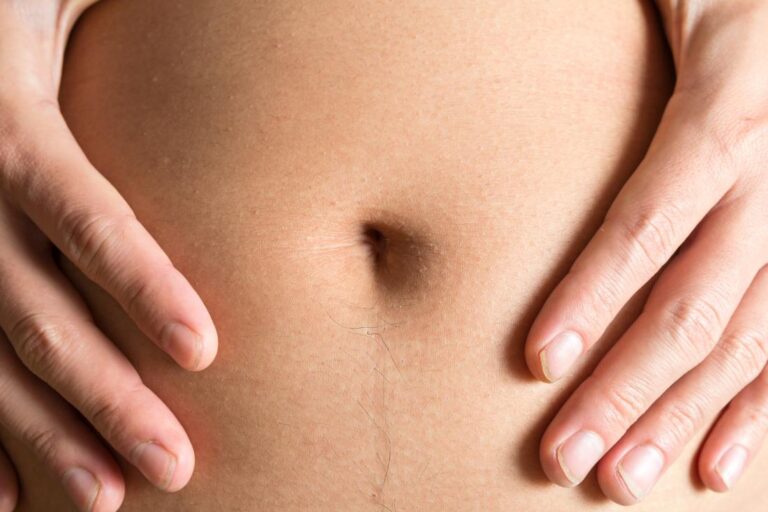What causes belly button discharge? Can surgery, yeast and bacterial infections, diabetes or pregnancy be causing your navel discharge? Navel discharges which can be clear (or watery), smelly, white, brown, or yellowish in color can be due to a number of causes. Uncover more.

One of the most common causes of discharge from navel is fungal infections. This is worsened by the fact that the “belly button can be a dark moist, warm place, the ideal breeding ground for fungi” especially Candida Albicans.
When yeast (especially Candida Albicans) overgrowth occurs on your navel, it causes a swollen navel with some discharge i.e. pus-filled blisters, with yellow, white, or dark discharges. Other common symptoms include itchiness, painful belly button, irritation, and tenderness. Redness, bleeding (belly button bleeding and discharge) due to scratching does happen and this can give room for a bacterial infection to set in.
Besides perfect navel environment, use of steroids, some cancer medications, HIV AIDS infection, obesity, antibiotic use, birth control pills, tight fighting clothing and pregnancy are known to encourage yeast infections not just on the navel but also on other parts of the body.
How to treat or cure yeast infections
Antifungal medications especially cream and powders are often used in case one has a yeast infection on the navel. Furthermore, ensure you keep good navel hygiene and thoroughly dry it after taking a shower, avoid tight-fitting clothes, reduce the use of antibiotics, drink live yogurt and reduce alcohol and sugar consumption.
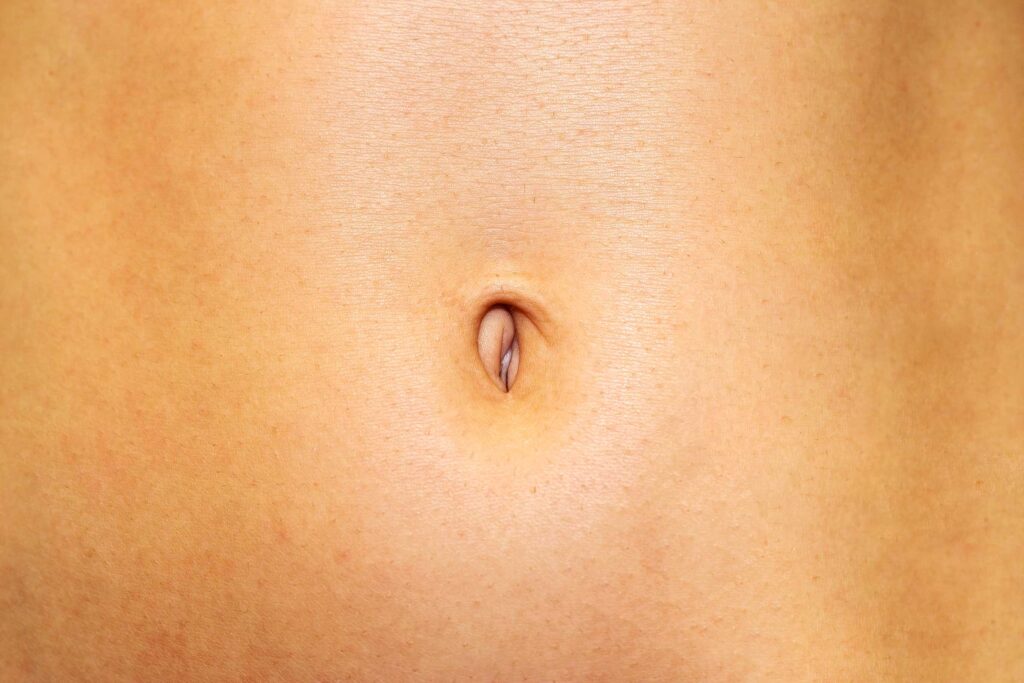
Bacteria, just like fungi love moist, dark, and warm places. This can be worsened with sweat and debris being deposited on your navel especially if you have an ‘innie’ kind of a navel and/or you do not clean it well.
When bacteria invade and thrive in your navel, it leads to pus-like greenish, brown or yellowish smelly discharge from your navel. Bacterial infections are also common after surgery or if you scratch your navel due to fungal infection as this creates open sores leading to not only bleeding but also bacteria entry.
To treat bacterial infections, a doctor will prescribe antibiotics – topical, oral, intramuscular and intravenous. In addition, proper hygiene – use antibacterial soaps to wash your navel, hand sanitizers, avoid touching your navel with dirty hands, etc. will be helpful.
Omphalitis
This refers to an infection of the umbilical stump that commonly affects neonate (newborn babies). This bacterial infection is especially caused by Staphylococcus aureus, Escherichia coli and Streptococcus that causes cellulitis or skin infection with redness, warmth, swelling and pain.
Other symptoms include pus from the umbilical stump, fever, fast heart rate (tachycardia), low blood pressure (hypotension), somnolence, poor feeding, and yellow skin (jaundice)
Some people end up with a discharge coming from the belly button after surgery especially after tummy tucks, tubal ligation, or surgery on any of the organs in your tummy where laparoscopic surgery is one common procedure used.
For instance, I have heard of many cases where patient complain of discharge from navel after laparoscopic surgery. This is not due to the procedure but infections that come due to the surgery.
Immediately after the surgery and up to three weeks, it is normal to have some drainage especially clear odorless discharge from navel. A little bit of crusting is also ok. However, if you have symptoms such as increasing pain, redness, swelling, chills or fever, see your surgeon immediately.
a). Infected sutures
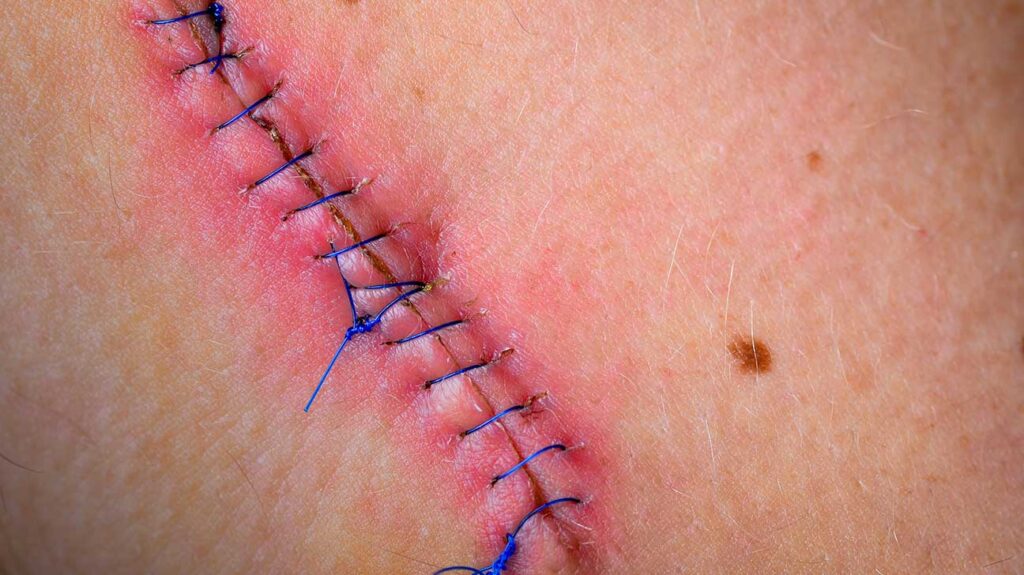
In some instances, the discharge out of belly button will be due to a buried stitch especially if it lasts for longer than two to three weeks, which is the normal healing time. According to Francisco Canales, MD, Santa Rosa Plastic Surgeon, “depending on the type of sutures used an infected suture, a “spitting suture” or a suture that should have come out but is still in may be the answer” [realself.com].
If the discharge malodorous drainage (a stinky or smelly discharge); it is a likely indication that the retained deep stitch is infected. Using peroxide will help kill bacteria but it slows healing, clean it with mild antibacterial soap and water.
If there is no improvement, see your surgeon for the removal of retained suture. He/she may also recommend some medication especially antibiotics.
b). Cysts in umbilical track
If you went for a tummy tuck and you tend to have intermittent or very serious, severe or chronic discharge, a possible cause could be cysts in your umbilical track. “Intermittent and chronic drainage from the belly button area after a tummy tuck indicates that there is a cyst associated with the umbilical track,” This is according to Barry L. Eppley, MD, DMD and Indianapolis Plastic Surgeon [realself.com].
Trapped skin, hair growing tucked skin or both could be causing a cyst and therefore you will have discharge. In case of hair growing tucked skin, ingrown hair is what could cause this discharge.

Following a surgical procedure such as tubal ligation, some patient ends up with cud-like smelly white discharge from belly button. This will often be accompanied by swelling, redness, and abdominal pain. All this are signs of infection after your surgery.
Urachus Abnormalities
Urachus is a remaining connection channels that exists in embryogenesis (embryo formation and early development) that connects the bladder to your navel. However, after the 12th week of pregnancy, the urachus is sealed off and obliterated. Sometimes, it might persist after birth presenting four problems:
a). Urachal cysts
This occurs when the urachus did not obliterate completely but there is no connection between umbilicus and bladder. This gives cysts a chance to develop. It is often asymptomatic but if infected, it can “cause abdominal pain or could start to leak cloudy or bloody fluid at the umbilicus” [urology.ucsf.edu] i.e. crusty and bloody belly button discharge.
This problem is most common in adults and older children. Besides the visible persistent navel drainage, you might have other symptoms such as lower abdominal pain, lump, urinary tract infections, hematuria (bloody urine) or pain when urinating or peeing.
b) Patent urachus
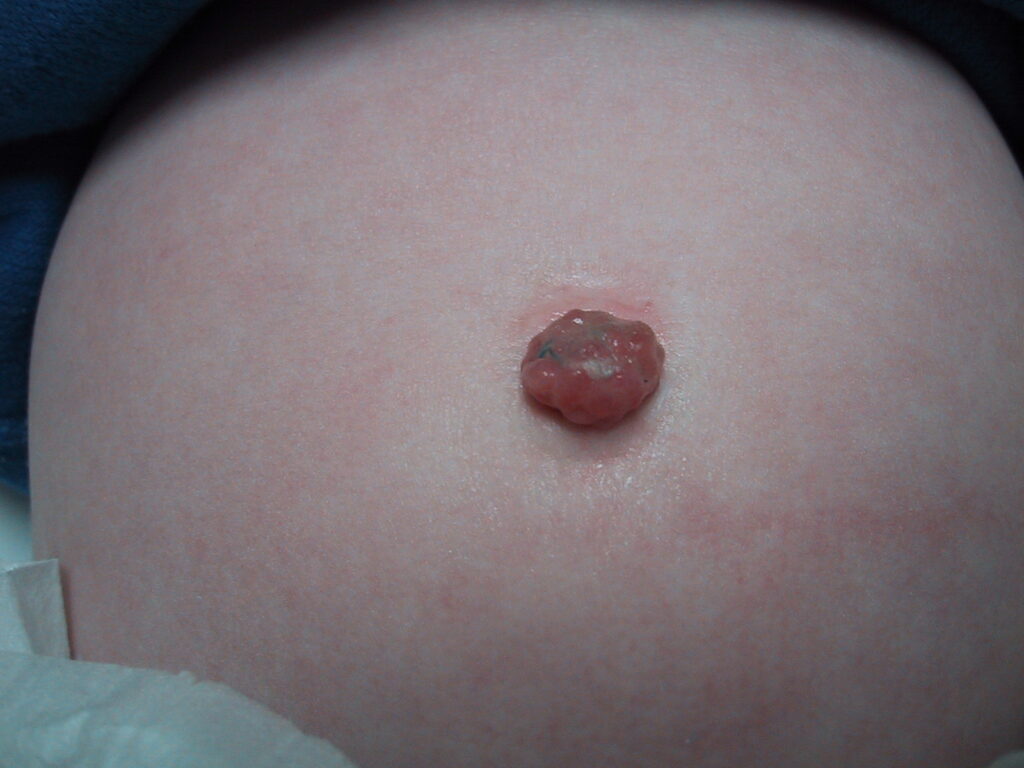
Patent urachus happens when there is a connection between the bladder and umbilicus. This makes a patient to leak urine from their umbilicus i.e. “patent urachus can cause varying amounts of clear urine to leak at the umbilicus” [urology.ucsf.edu].
c) Urachal sinus
Urachal sinus is when your urachus fails to seal close to your umbilicus, leaving cavity from your umbilicus that ends in a part of your urachus known as a sinus. It might show no symptoms or cause abdominal pain and fluid discharge, especially with an infection.
d) Diverticulum
This happens when the urachus fails to seal close the bladder forming a track from your bladder that ends in your diverticulum. It can be without symptoms or at times cause urinary tract infections.
In terms of prevalence of the above urachus abnormalities, they are not very common i.e. they are “very rarely seen in adults because the urachus is normally obliterated in early infancy” [ncbi.nlm.nih.gov] but do exist.
e) Treatment of urachus abnormalities
Chemical cauterization, drainage and surgical (where surgeons can opt for laparoscopic excision) intervention are normally required to deal with this problem. The exact procedure will depend on the specific condition.
If a skin infection occurs due to any of the urachus abnormalities i.e. tenderness, fever, and redness that spreads, antibiotic treatment and hospitalization might be necessary.

Diabetic patients may suffer from crusty discharge resembling a cottage cheese-like substance with a foul odor that may come from the navel. You need to manage diabetes to be able to deal with this cause.
The other common causes of navel discharge are an infected navel piercing, obesity or internal abscess. Sebaceous cyst and polyps on navel are the rarer possible cause.
We have looked at the common causes of discharge from navel where we said the discharge could be having a foul odor or odorless. Furthermore, we have said the discharge can be white, brown, yellowish or clear discharge (belly button watery discharge). Let us now evaluate some of the common possible causes for some unique cases.
For the case of one having a smelly discharge, the cause is mainly infections. This could be infected sutures, infections after surgeries, internal umbilicus abscess or infections due to urachus problem.
If you have pus-like yellowish, white or darker colored belly button smelly discharge accompanied with itchiness, tenderness, pain and redness, blisters, the infection is most likely to because by yeast.
On the other hand, a chunky, stinky bellybutton discharge that is yellow, white or brown, (greenish, or grey at times), it is most probable you have a bacterial infection.

Having a navel pain and discharge can be due to problems associated with abdominal surgeries, tummy tucks or having urachus abnormalities especially urachal cysts. A little pain can also due to the soreness caused by a fungal or bacterial infection.
If you have blood discharge from the navel, probable causes would be urachus cysts as already seen can cause a red discharge. Bleeding can also be due to scratching caused by infections especially yeast infection, bacterial or both which tends to cause itchiness. Finally, injuries can also be a cause if you are only bleeding or bleeding with a clear discharge.
If the belly button bleeding and discharge is so much, consider seeing your doctor for further help since it could be something else causing the bleeding.
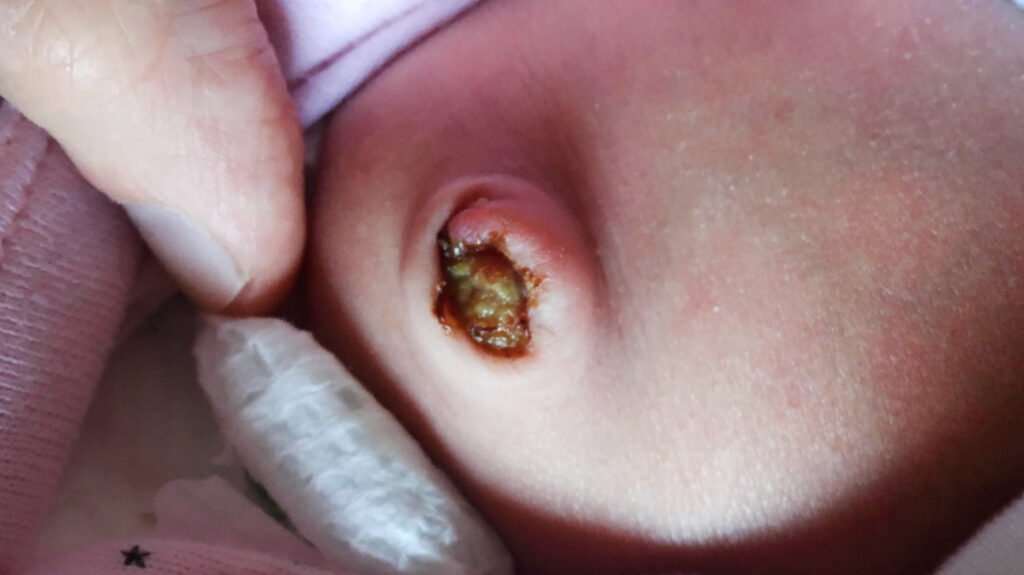
Newborn and baby belly button discharge could be due to a number of reasons common ones being including urachus abnormalities i.e. “in newborns and infants, persistent drainage or “wetness” of the bellybutton can be a sign of a urachal problem” [urologyhealth.org], bacterial such as Omphalitis or yeast infections.
If the umbilicus has recently been cut for newborns, a little clear discharge and crusting is a normal part of the healing process and it should not worry you.
Except for pregnancy, which only increases the risk of one getting yeast infections, there are no gender-specific causes of navel discharges. Most of these causes can result in discharge from the navel in female and male
A clear discharge is normal healing of your navel after surgery, piercing, or injury. Furthermore, having patent urachus can result to this problem where the clear fluid oozing out is urine.
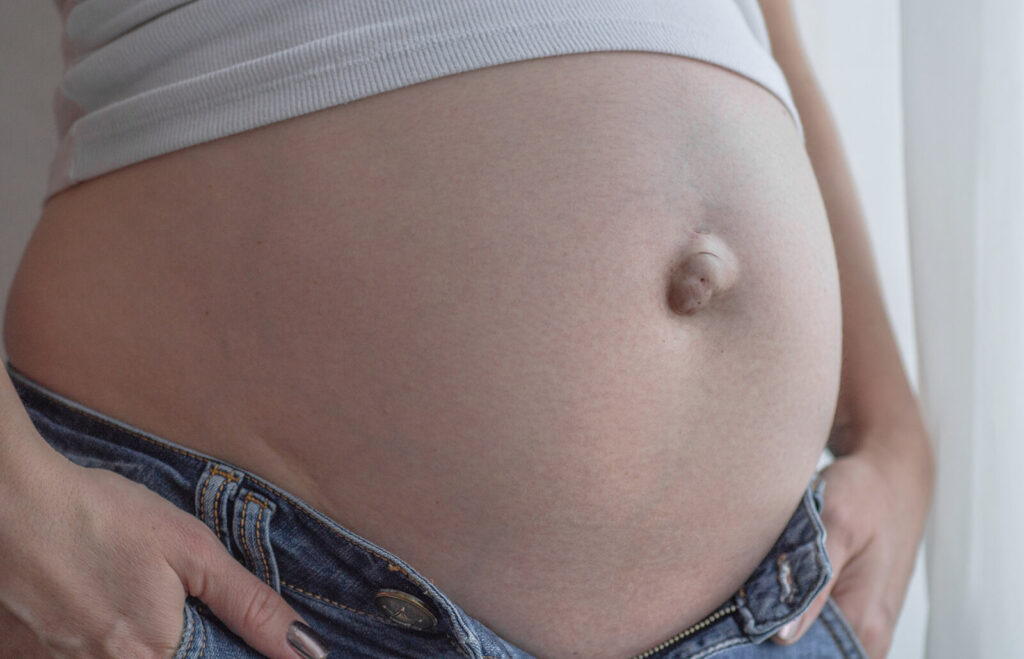
Most women complain about bellybutton discharge during pregnancy. Whereas having asymptomatic urachus abnormalities may show symptoms during pregnancy or pregnancy may increase chances of one having a yeast infection, there is no other reason for navel discharge during pregnancy.
In responding to this question ‘ok I am pregnant and I felt my belly button and it was moist and there was a white discharge that came out. Is there something wrong with my pregnancy or baby? Dr. Jeff Livingston, Obstetrics and Gynecology, clearly said there is no direct connection between pregnancy and the problem.
Having a bellybutton odor and discharge often pushes many people to try virtually anything to get rid of this problem.
However, no matter how desperate you feel, avoid scratching or picking it, over-cleaning especially trying to turn it inside out, using any antiseptic on your navel or add some in your bath water or applying OTC creams.
Clean wit with saline solution to clean your navel and dry it well. If you do not notice any change after a few days, see your doctor for diagnosis and treatment.
